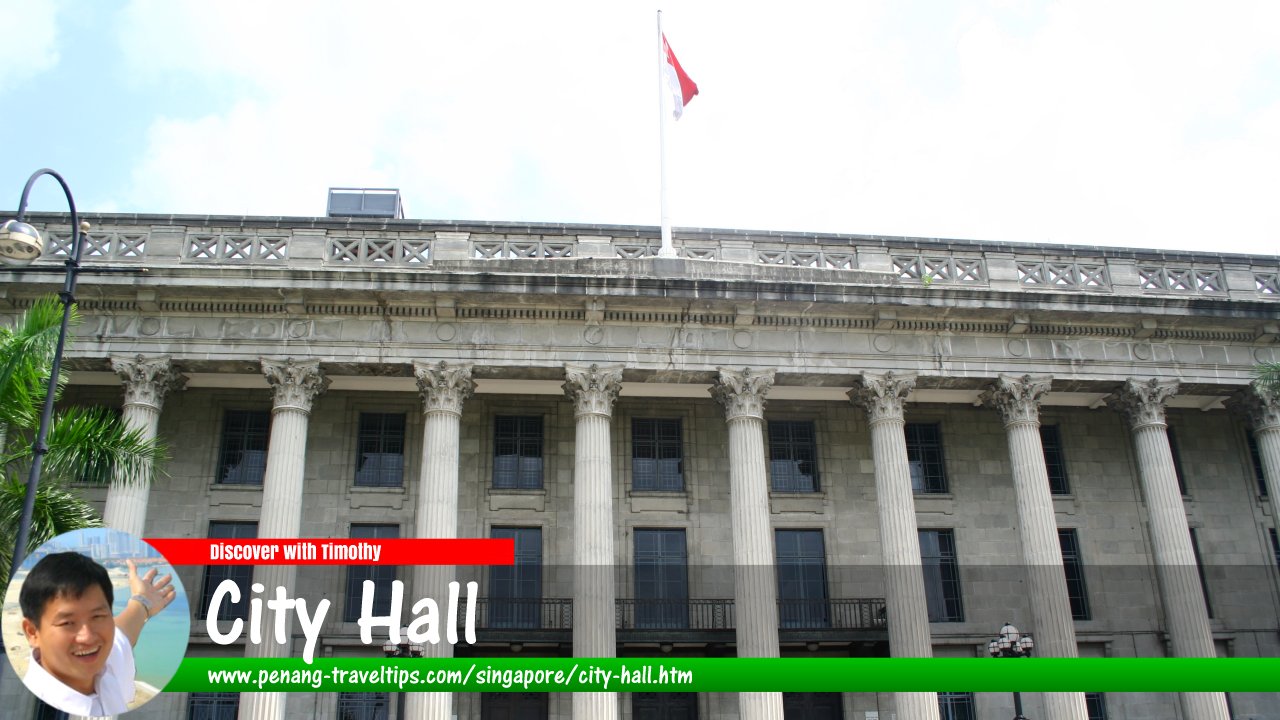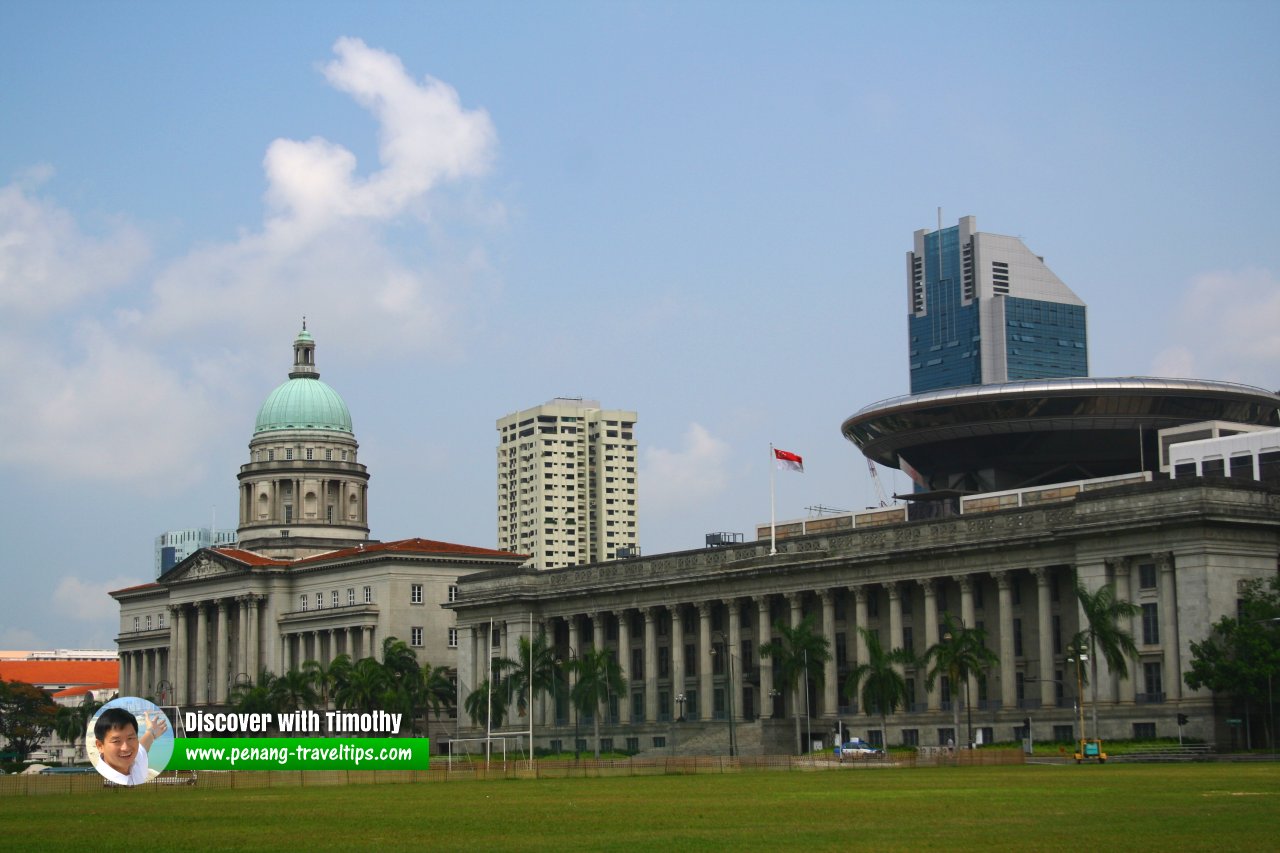 City Hall, Singapore (8 July 2006)
City Hall, Singapore (8 July 2006)
City Hall is a historic building in Singapore. The imposing structure is along St Andrew's Road, facing the Padang, with St Andrew's Cathedral on its left, and the old Supreme Court building on its right. The area surrounding City Hall is today designated the City Hall subzone, a neighbourhood within the Downtown Core planning area. It is in Postal District 06.
The City Hall building was designed by two architects of the municipal government, A. Gordans and F.D. Meadows. Construction began in 1926, and the City Hall was completed in 1929. It was originally known as the Municipal Building, and later as City Council. The most impressive characteristic of the City Hall is the corinthian colonnade on the front side of the building, with its grand staircase going up to the front door.
The City Hall has witnessed many historical moments in Singapore's history. It was on the grand staircase that Lord Louis Mountbatten accepted the surrender of Singapore by the Japanese General Itagaki on 12 September 1945. And it was also here, 14 years later, in 1959, that Lee Kuan Yew declared Singapore's independence from Great Britain. National Day Parades are often carried out in front of the steps of City Hall.
Despite having a City Hall, the city of Singapore does not have a mayor or even a City Council. The City Council and the Rural Board were abolished in 1959, and with that, the role of the mayor disappeared. In its place are five Community Development Councils, or CDCs, namely Central Singapore, Northeast, Northwest, Southeast and Southwest, established in 1997. The CDCs are not elected bodies, rather each of them consists of 12 to 80 members appointed by the People's Association Chairman or Deputy Chairman. Each of the five CDCs is headed by a mayor.
City Hall Building was gazetted as a National Monument of Singapore on 14 February 1992.
Map of City Hall Subzone, Singapore
List of roads in City Hall subzone, Singapore

View of City Hall building from the Padang, right, with the Supreme Court building to the left (8 July 2006)

List of the Historic Buildings in Singapore; Discover Singapore
 Copyright © 2003-2025 Timothy Tye. All Rights Reserved.
Copyright © 2003-2025 Timothy Tye. All Rights Reserved.
Copyright © 2003-2025 Timothy Tye. All Rights Reserved.

 Go Back
Go Back